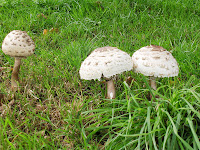I mention in The Vineyard (earlier post) the enormous changes – good and not so good – that have happened in Devon over the last four decades. One not-so-good change has taken place over the last few months only.
Devon is famous for its hedges. Sometimes these were planted and sometimes they were created when the land around was cleared, which makes them irreplaceable fragments of ancient forest. They are full of insects, birds, animals and wildflowers and, if properly maintained, can be stock-proof as well.
You maintain them by ‘laying’ them every few years. This means partially cutting through the trunks of trees and laying them sideways so that they sprout thickly upwards from the side of their trunks, the trunks and the sproutings forming a dense tapestry. Here is part of the hedge around our garden being laid this February.
 |
| Our hedge being laid |
Recently however, in an attempt I think to preserve the hedges (which have been disappearing at an alarming rate since the Second World War), farmers have been given grants to fence them.
Sometimes the end is left more accessible, as here.
 |
| A fenced hedge with a more accessible end (left of picture) |
But sometimes the hedges are completely enclosed, as here.
 |
| A hedge fenced on all sides |
How will they be reached for maintenance? Will anyone bother? Once the trees get too big they can no longer be laid and the hedge is lost.
How is the non-burrowing wildlife to get out and how is it to roam? More often than not the fences mean that there is no way between the fields of different landowners.
And what about people?
When he could no longer wander the countryside of his childhood because of the Agricultural Revolution and its ‘enclosures’, the poet John Clare went mad with grief.



























